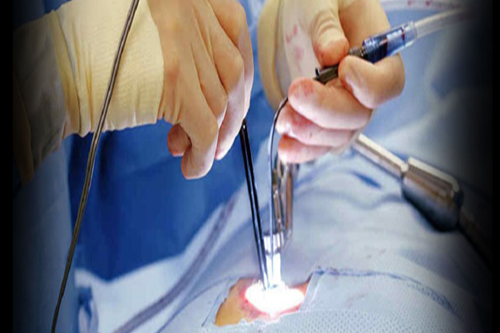Meet Our Doctor
Dr. Paresh Bang

Keyhole Spine Surgery In Nagpur

Keyhole spine surgery, also known as minimally invasive spine surgery or spinal endoscopy, is a surgical approach that involves making small incisions (keyhole incisions) to access the spine rather than a large, traditional incision. The goal is to minimize damage to surrounding tissues, reduce blood loss, and speed up recovery compared to conventional open spine surgery.
keyhole surgery, and the decision to use this approach depends on factors such as the specific diagnosis, the location and complexity of the spine issue, and the surgeon’s expertise. Patients considering spine surgery should consult with their healthcare provider to determine the most appropriate approach for their individual case.
Keyhole Spine Surgery Procedure
1. Patient Positioning:
- The patient is positioned on the operating table in a way that provides the surgeon with optimal access to the spine through the small incisions.
2. Anesthesia:
- General anesthesia or local anesthesia with sedation may be administered to ensure that the patient is comfortable and pain-free during the procedure.
3. Incisions:
- Small keyhole incisions are made at the surgical site. The number and location of these incisions depend on the specific procedure and the area of the spine being treated.
4. Insertion of Endoscope:
- An endoscope, which is a thin, flexible tube with a light and a camera at the tip, is inserted through one of the keyhole incisions. The camera provides real-time imaging of the internal structures of the spine.
5. Creation of Working Space:
- Specialized instruments are inserted through the remaining keyhole incisions. These instruments are used to create a working space and perform the necessary surgical maneuvers.
6. Visualization on Monitor:
- The images captured by the endoscope are displayed on a monitor in the operating room. This allows the surgical team to visualize the targeted area of the spine with high precision.
7. Procedure Execution:
- Depending on the specific spinal condition being treated, the surgeon uses specialized instruments to perform procedures such as discectomy (removal of a portion of a spinal disc), laminectomy (removal of a portion of the vertebral bone), spinal fusion, or other interventions.
8. Closure of Incisions:
- Once the procedure is complete, the surgeon closes the small incisions with sutures or adhesive strips. The small size of the incisions typically results in minimal scarring.
